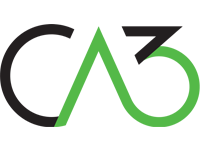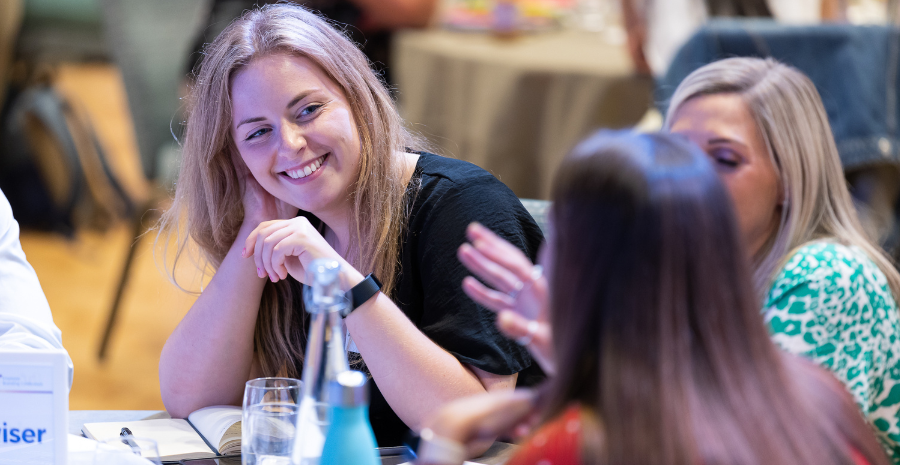Noel Thomas, Creative Director at CA3, answers our audience’s most burning questions following his case study presentation with Rolls-Royce at our 2019 Recruitment Leaders Conference.
What budgets were involved in the development of Rolls-Royce’s onboarding programme?
The Rolls-Royce onboarding initiative understandably took a long time to bring to life and a lot of hard work. And, as you’d expect for a global project requiring input from right across the business, it was relatively resource heavy. But, the cost of the system itself (CA3’s Eli Onboarding tech) was not high at all. It isn’t a HR system trying to do everything for our business. It’s a bespoke piece of software design to do one thing amazingly well – set people up for success.
How would you get a HR Team who are ‘comfortable’ with their onboarding process, involved and engaged in improving it?
Data, data, data, one of our seven secrets of success, is a great place to start. Survey your new joiners, get their feedback on the process, so you can see where it’s succeeding and where it’s not. Another great way is for them to go through the process themselves, from start to finish. Put themselves in the shoes of the new starter to really see how ‘comfortable’ they feel with it. Just filling out the ludicrous number of forms we originally emailed to new starters had all of our teams and stakeholders demanding change. And, if your HR team fail to see the benefit of improving the onboarding experience itself (though I’m not sure why anyone would), highlight how it will improve their day to day role, by reducing admin and empowering line managers to take control.
Who is responsible for onboarding?
The line manager has to own the onboarding experience, but it’s HR’s role to ensure they have the support, tools and technology necessary to take responsibility for it. Don’t assume they know what to do. Training is important, as is a process or checklist for them. Keep it simple, and time-light. And, most importantly, ensure they understand the benefits to them and their team. This isn’t a fluffy HR initiative – this is a business critical process. CA3 wrote a great article on HR Grapevine recently on getting line managers to own onboarding. Check it out.
What are your top recommendations if you can’t afford to invest in a portal?
Onboarding technology arguably pays for itself ten-fold, but if budgets are really tight there’s still a huge amount you can do. First focus on your process and how you can simplify it. Ensure there are key stages (so people know where they are in that process), then fill those stages with positive touchpoints as well as process driven ones. These are hugely important – onboarding shouldn’t just be a process, it should be an experience. Think about what works for your business, and what the people joining you would love. At RR we have a real welcome card signed by everyone in the new starters team. CA3 make sure there’s a packet of the new starters favourite biscuits sitting on their desk on day one. For you it might be as simple as a phone call from their line manager, a welcome pack and having a laptop on day one. Video is also a fabulous way to engage with a wider audience in a resource-light way. That’s all GLL needed to revolutionise their boring, half-day induction.
How did you change the mind sets of leaders and HR and get them onboard?
A lot of hard work and total belief in our vision. Constantly challenging the status quo, and using real insight/data to do that. Never giving up.
Is Eli integrated into Workday?
Yes it is. Eli has an open API, which basically means it can talk to any other system easily. As soon as a new starter has accepted their offer, Workday sends their user profile to Eli and their onboarding experience begins. At the same time, their line manager is informed and invited to their own area of Eli too, which has a checklist to ensure they know what they’re meant to be doing (such as assigning a buddy).
What did candidates find most important in the onboarding process that affected their perception of you?
Think that’s easiest to answer if you compare the process we had before and what we have now. RR’s onboarding process was clunky, inconsistent, laborious and potentially brand damaging. It was failing our new starters. Now it’s everything you’d expect from one of the most admired brands in the world. Digital, personalised, informative and immersive. That’s not to say it’s perfect yet – not everyone gets a buddy and sometimes IT’s not ready on day one – but compared to where we were, I believe onboarding process is now world class.
Is there anything within the process that personally benefits the candidate & takes your model above and beyond the norm?
No. Not one thing. It’s a combination of everything that makes it unique. The digital, personalised portal. Regular line manager and buddy engagement. The physical welcome card on day one. The social wall (within the portal) that allows our grads and interns to chat and make connections that will support them when they start work. On their own they’re great, but together they’re amazing.
What kind of information did you include in the toolbox?
All of the content on join.rolls-royce.com is personalised around an individual’s role, location, department, grade and language. And, that information is broken down into 5 sections:
- First things first – making sure everything that needs to be done before day one, is.
- Get to know us – giving everyone a great overview of the Rolls-Royce business, no matter where your career lies within it.
- Dream big and change the world – content designed to help you reach your full potential and support you being your best every day.
- Meet your team – all about you, your manager, buddy and location.
- Your joining tools – everything you need to create the best start in your career, setting you up for success.
What’s next for onboarding at Rolls-Royce?
More video content is always a focus for us, again as personalised as possible. We’re also exploring 360° video tours, though with well over 200 locations the logistics are proving a bit of a challenge. The CA3/Eli team have an extremely detailed roadmap of updates too, ensuring our onboarding experience is continually evolving.
How do you ensure a consistent onboarding process which reflects the differences of the global teams?
Each one of our global locations was involved in the creation of our onboarding process – designed with our people, not for our people. And, all the content on Eli is personalised around an individual’s location (and language). While there is universal content that everyone sees, the global teams have responsibility for ensuring their location’s content is not only on brand from a design and culture perspective. A great example of this is in Norway, where the concept of a welcome card signed by your team is (believe it or not) a bad idea! So, of course, our card isn’t used there.
The average time per user on site is 7-10 minutes – is that good?
Extremely. Most career websites have an average time on site of around 90 seconds, and anything above 4 minutes is seen as exceptional. Our new hires are also logging on to the portal an average of 6.4 times before day one, proving just how engaged they are. You can’t argue with stats like that.
What budgets were involved in the development of Rolls-Royce’s onboarding programme?
The Rolls-Royce onboarding initiative understandably took a long time to bring to life and a lot of hard work. And, as you’d expect for a global project requiring input from right across the business, it was relatively resource heavy. But, the cost of the system itself (CA3’s Eli Onboarding tech) was not high at all. It isn’t a HR system trying to do everything for our business. It’s a bespoke piece of software design to do one thing amazingly well – set people up for success.
How would you get a HR Team who are ‘comfortable’ with their onboarding process, involved and engaged in improving it?
Data, data, data, one of our seven secrets of success, is a great place to start. Survey your new joiners, get their feedback on the process, so you can see where it’s succeeding and where it’s not. Another great way is for them to go through the process themselves, from start to finish. Put themselves in the shoes of the new starter to really see how ‘comfortable’ they feel with it. Just filling out the ludicrous number of forms we originally emailed to new starters had all of our teams and stakeholders demanding change. And, if your HR team fail to see the benefit of improving the onboarding experience itself (though I’m not sure why anyone would), highlight how it will improve their day to day role, by reducing admin and empowering line managers to take control.
Who is responsible for onboarding?
The line manager has to own the onboarding experience, but it’s HR’s role to ensure they have the support, tools and technology necessary to take responsibility for it. Don’t assume they know what to do. Training is important, as is a process or checklist for them. Keep it simple, and time-light. And, most importantly, ensure they understand the benefits to them and their team. This isn’t a fluffy HR initiative – this is a business critical process. CA3 wrote a great article on HR Grapevine recently on getting line managers to own onboarding. Check it out.
What are your top recommendations if you can’t afford to invest in a portal?
Onboarding technology arguably pays for itself ten-fold, but if budgets are really tight there’s still a huge amount you can do. First focus on your process and how you can simplify it. Ensure there are key stages (so people know where they are in that process), then fill those stages with positive touchpoints as well as process driven ones. These are hugely important – onboarding shouldn’t just be a process, it should be an experience. Think about what works for your business, and what the people joining you would love. At RR we have a real welcome card signed by everyone in the new starters team. CA3 make sure there’s a packet of the new starters favourite biscuits sitting on their desk on day one. For you it might be as simple as a phone call from their line manager, a welcome pack and having a laptop on day one. Video is also a fabulous way to engage with a wider audience in a resource-light way. That’s all GLL needed to revolutionise their boring, half-day induction.
How did you change the mind sets of leaders and HR and get them onboard?
A lot of hard work and total belief in our vision. Constantly challenging the status quo, and using real insight/data to do that. Never giving up.
Is Eli integrated into Workday?
Yes it is. Eli has an open API, which basically means it can talk to any other system easily. As soon as a new starter has accepted their offer, Workday sends their user profile to Eli and their onboarding experience begins. At the same time, their line manager is informed and invited to their own area of Eli too, which has a checklist to ensure they know what they’re meant to be doing (such as assigning a buddy).
What did candidates find most important in the onboarding process that affected their perception of you?
Think that’s easiest to answer if you compare the process we had before and what we have now. RR’s onboarding process was clunky, inconsistent, laborious and potentially brand damaging. It was failing our new starters. Now it’s everything you’d expect from one of the most admired brands in the world. Digital, personalised, informative and immersive. That’s not to say it’s perfect yet – not everyone gets a buddy and sometimes IT’s not ready on day one – but compared to where we were, I believe onboarding process is now world class.
Is there anything within the process that personally benefits the candidate & takes your model above and beyond the norm?
No. Not one thing. It’s a combination of everything that makes it unique. The digital, personalised portal. Regular line manager and buddy engagement. The physical welcome card on day one. The social wall (within the portal) that allows our grads and interns to chat and make connections that will support them when they start work. On their own they’re great, but together they’re amazing.
What kind of information did you include in the toolbox?
All of the content on join.rolls-royce.com is personalised around an individual’s role, location, department, grade and language. And, that information is broken down into 5 sections:
- First things first – making sure everything that needs to be done before day one, is.
- Get to know us – giving everyone a great overview of the Rolls-Royce business, no matter where your career lies within it.
- Dream big and change the world – content designed to help you reach your full potential and support you being your best every day.
- Meet your team – all about you, your manager, buddy and location.
- Your joining tools – everything you need to create the best start in your career, setting you up for success.
What’s next for onboarding at Rolls-Royce?
More video content is always a focus for us, again as personalised as possible. We’re also exploring 360° video tours, though with well over 200 locations the logistics are proving a bit of a challenge. The CA3/Eli team have an extremely detailed roadmap of updates too, ensuring our onboarding experience is continually evolving.
How do you ensure a consistent onboarding process which reflects the differences of the global teams?
Each one of our global locations was involved in the creation of our onboarding process – designed with our people, not for our people. And, all the content on Eli is personalised around an individual’s location (and language). While there is universal content that everyone sees, the global teams have responsibility for ensuring their location’s content is not only on brand from a design and culture perspective. A great example of this is in Norway, where the concept of a welcome card signed by your team is (believe it or not) a bad idea! So, of course, our card isn’t used there.
The average time per user on site is 7-10 minutes – is that good?
Extremely. Most career websites have an average time on site of around 90 seconds, and anything above 4 minutes is seen as exceptional. Our new hires are also logging on to the portal an average of 6.4 times before day one, proving just how engaged they are. You can’t argue with stats like that.
CA3 is a creative agency that helps organisations engage with talent through fabulously compelling communications. And, as our name suggests, we do that in three core areas: employer branding & talent attraction, Onboarding (supported by our award-winning technology Eli), and internal communications. Our clients are household names. Our work wins awards. We take our jobs seriously, but not ourselves. We come to work smiling, even on Mondays.









